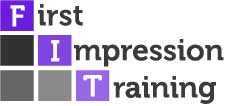Procrastination is the thief of time, they say.
If there were an award for Best Procrastinator of the Century, I’d win hands down!
Seriously, if I can put off until tomorrow what can (and should) be done today, then sure as night follows day, I’m a dead cert to bet on 👍
It is said that PROCRASTINATION is an EFFECT not a CAUSE, and we should all learn to live life at the C-side – that is, be at CAUSE of what’s happening in our lives and don’t be a victim to the EFFECT of what’s going on.
Take RESPONSIBILITY for the outcomes and results you achieve and learn the lesson when things don’t turn out as you may have wished or planned them to.
Don’t put off today what you think you can easily do tomorrow and remember – today ain’t over until tomorrow is planned!
What Exactly IS Procrastination?
Wikipedia refers to procrastination as “the action of unnecessarily and voluntarily delaying or postponing something, despite knowing that there will be negative consequences for doing so”
And according to James Clear, best known for his best-selling book Atomic Habits, there is proper, real science behind procrastination, which shouldn’t be ignored. In fact, the problem is so timeless that ancient Greek philosophers, such as Socrates and Aristotle developed a word to describe this type of behaviour – akrasia.
Akrasia is the state of acting against your better judgment. It is when you do one thing even though you know you should do something else. Loosely translated, akrasia IS procrastination, or a lack of self-control – a force that prevents you from following through on what you set out to do.
Why Do We Procrastinate?
What is going on in the brain that causes us to avoid the things we KNOW we should be doing?
Behavioural psychology research has revealed a phenomenon called ‘time inconsistency’ which helps explain why procrastination seems to pull us in, away from action, despite our good intentions.
According to Clear, time inconsistency refers to the tendency of the human brain to value immediate rewards, over and above, future rewards. He explains that the best way to understand this phenomenon is by imagining that we have two selves – our Present Self and our Future Self. When we set goals for ourselves, such as losing weight or writing a book or learning a language, we are actually making plans for our Future Self. We are envisioning what we want our life to be like in the future. Behavioural science explains that when we think about our Future Self, it is quite easy for our brain to see the VALUE in taking action, where there are long-term benefits to be had, simply because the Future Self values long-term rewards.
A Tale of Two Selves
However, while the Future Self can set goals, only the Present Self can take action. When the time comes to make a DECISION, we are no longer making a choice for our Future Self, because now we are in the present moment, and our brain is only thinking about the Present Self. Again, science has proven that the Present Self really likes instant gratification, not long-term payoff or far-off rewards.
So, the Present Self and the Future Self are often at odds with one another. The Future Self wants to be fit & healthy for example, while the Present Self wants a donut 🍩. We of course, all know the importance of healthy eating in order to avoid being overweight or at risk of heart disease or diabetes in years to come, although these potentially damaging consequences seem a lifetime away – and our Present Self isn’t interested in lifetime wins, we want instant payoff – like BOOM!
Similarly, many young people know that saving for retirement in their 20s or 30s is vital, although the benefit of doing so is decades off. It is far easier for the Present Self to see the value in buying a new pair of Jimmy Choos or a new car, than in stashing £100 a month in an ISA!
This is one reason why you might go to bed feeling motivated to make a change in your life, and then when you wake up, you find yourself falling back into old patterns. Your brain values long-term benefits when they are in the future (tomorrow), however it values immediate gratification when it comes to the present moment (today).
The Procrastination-Action Line
You cannot rely on long-term consequences, pay-offs or rewards to motivate the Present Self. There are two clear modes of motivation – often referred to as the CARROT and STICK whereby we move TOWARDS something out of DESIRE or we move AWAY from something, out of FEAR. Which means, we have to find a way to move future benefits (OR negative consequences) into the present moment – we have to make the future consequences become present consequences.
This is exactly what happens during the moment when we finally move beyond procrastination and take ACTION. For example, let’s say you have a report to write. You’ve known about it for weeks and continued to put it off day after day. You experience a little bit of nagging pain and anxiety thinking about this paper you have to write, but not enough to do anything about it. Then, suddenly, the day before the deadline, the future consequences turn into present consequences, and you write that report hours before it is due. The pain of procrastinating finally escalated, and you crossed the ‘Action Line.’
As soon as you cross the Action Line, the pain begins to subside. In fact, being in the middle of procrastination is often more painful than being in the middle of doing the actual work! The guilt, shame and anxiety that you feel while procrastinating, are usually worse than the effort and energy you have to put in while you’re taking action – because the problem is not doing the work, it’s starting the work. If we want to stop procrastinating, then we need to make it as easy as possible for the Present Self to get started and trust that motivation and momentum will come after we begin to take action.
Motivation often comes just after starting to act, not before you act. And while MOTIVATION always works, it never lasts – like taking a bath, we have to motivate ourselves every day to do the things we may not want to do if we are to reap the benefits beyond instant gratification (or a clean & fresh body for just one day!)
How to Stop Procrastinating, Right Now
James Clear details a variety of strategies we can employ to stop procrastinating RIGHT NOW!
The following 3 options may prove to be invaluable (life) lessons if you’re looking to SAVE TIME & ENERGY in those 24 hours-a-day of yours in the future…..
Option 1: Make the Rewards of Taking Action More Immediate
Motivation strategy – DESIRE
If you can find a way to make the benefits of long-term choices more immediate, then it becomes easier to avoid procrastination. One of the best ways to bring future rewards into the present moment is with a strategy known as ‘temptation bundling’.
Temptation bundling is a concept that came out of behavioural economics research performed by Katy Milkman, at The University of Pennsylvania. Simply put, you bundle a behaviour that is good for you in the long-run with a behaviour that feels good in the short-run.
The basic format is: Only do [THING YOU LOVE] while doing [THING YOU PROCRASTINATE ON]
Here are a few common examples of ‘temptation bundling’:
- Only listen to audiobooks or podcasts you love, while exercising.
- Only get a pedicure, while processing overdue work emails.
- Only watch your favourite show, while ironing or doing household chores.
- Only eat at your favourite restaurant, when conducting your monthly meeting with a difficult colleague (or relative!)
Option 2: Make the Consequences of Procrastination More Immediate
Motivation strategy – FEAR
There are many ways to force you to pay the costs of procrastination sooner, rather than later. For example, if you are exercising alone, skipping your workout next week won’t impact your life much at all. Your health won’t deteriorate immediately because you missed that one workout. The cost of procrastinating on exercise only becomes painful after weeks and months of lazy behaviour.
However, if you commit to working out with a friend at 7 a.m. every Monday, then the cost of skipping your weekly workout becomes more immediate. Miss this one workout and you’re seen as unreliable. Miss 2 or 3 workouts with your friend, and you look like a loser!
Another common strategy Clear talks about is the use of the American internet company’s app Stikk.com, which enables users to make commitment contracts in order to reach their personal goals. Goal-setters use a service like Stickk to place a bet – if they don’t do what they say they’ll do, then the money goes to a charity they hate! The idea here is to put some skin in the game and create a new (not-so-pleasant) consequence that happens if the goal-setter doesn’t do the behaviour or take action RIGHT NOW!
Option 3: Design Your Future Actions
One of the favourite tools psychologists use to overcome procrastination is called a ‘commitment device.’ Commitment devices can help you stop procrastinating by designing your future actions, ahead of time.
For example, you can curb your future eating habits by purchasing food in individual packages rather than in bulk size. You can stop wasting time on your phone by deleting games or social media apps.
Similarly, you can reduce the likelihood of mindless channel surfing by hiding your TV in a closet and only taking it out on big game days. You can build an emergency fund by setting up an automatic transfer of funds to your savings account. These are all examples of ‘commitment devices’ that help reduce the odds of procrastination.
Option 4: Make the Task More Achievable
As we’ve now discovered, the friction that causes procrastination is usually centred around starting a behaviour or task. Once you begin, it’s often less painful to keep working. This is one good reason to reduce the SIZE of your habits, because if your habits are small and easy to start, then you will be less likely to procrastinate and more likely to make it to the finishing line. James Clear’s book ‘Atomic Habits’ explains this concept well, and another brilliant read is ‘Tiny Habits – Why Starting Small Makes Lasting Change Easy’’ by BJ Fogg, which explains the THINK BIG, START SMALL, SCALE FAST philosophy so brilliantly.
One popular way to make habits easier is to use The 2-Minute Rule: “when you start a new habit, it should take less than two minutes to do.” The idea is to make it as easy as possible to get started and then trust that momentum will carry you further into the task after you begin. Once you start doing something, it’s easier to continue doing it. The 2–Minute Rule overcomes procrastination and laziness by making it so easy to start taking action that you can’t say no!
Another great way to make tasks more achievable is to break them down into bitesize, manageable chunks. For example, consider the remarkable productivity of the famous writer Anthony Trollope. He published 47 novels, 18 works of non-fiction, 12 short stories, 2 plays, and an assortment of articles and letters. How did he do it? Instead of measuring his progress based on the completion of chapters or books, Trollope measured his progress in 15-minute increments.
He set a goal of 250 words every 15 minutes and he continued this pattern for 3 hours each day. This approach allowed him to enjoy feelings of satisfaction and accomplishment every 15 minutes, while continuing to work on the large task of writing a book.
My business mentor has built 9 million+ pound businesses in 90-minute chunks – it’s the amount of time he spends every day working ON his business, as opposed to working IN his business. Nigel Botterill is Founder of the Entrepreneurs Circle and his rep goes before him – check him out www.nigelbotterill.com
You know what they say: “an inch is cinch and a yard is hard” and we all know that old metaphor: How do you eat an elephant? You get my drift…. Break things down into manageable bitesize bits!
Next time in FIT Matters, I’m looking at ways to KICK THE PROCRASTINATION habit once and for all – when we’ll discover life-changing daily routines, designed to seriously raise our productivity game and encourage a much more action-oriented, energetic attitude to take us where we want and deserve to be – in business AND life!
Until then – STOP THAT THIEF….and keep FIT!
Best regs
Marie X


















